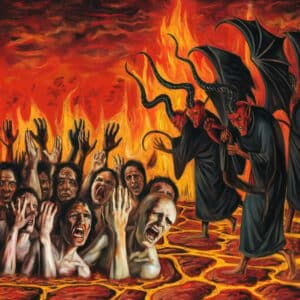

Bible reading order for beginners Do you wish to learn how to read the Bible as a beginner but have no idea where to start? If so, you’re not alone.
The Bible contains 66 books, with different authors, themes, and settings. It can, therefore, be challenging, especially for beginners, knowing where to start and end.
The good thing is that this article discusses the best order you can read the Bible as a first-timer. Stay tuned!
Best Order To Read The Bible For The First Time
The Bible is divided into the Old and the New Testaments. As a beginner, it’s best to start reading the new testament before proceeding to the old testament. Here’s why:
- The new testament discusses the story of Jesus and the community he established. It teaches Christians about his birth, death, resurrection, and everything that happened in between.
On the other hand, the old testament discusses the arrival of Jesus and teaches prophesy, typology, and foreshadowing.
- The old testament is easier to understand after readers have had a basic understanding of the new testament.
Best Order To Read The New Testament
When reading the new testament, it’s best to start with these chapters:
The Gospels
The Gospels, consisting of Matthew, Mark, Luke, and John, are the best place to start reading in the new testament. That’s because these chapters are eyewitness accounts of the teachings and life of Jesus. They are his biographies and contain overlapping stories. Note that each Gospel has its unique characteristics.
You can start with John, as it’s the easiest to understand, followed by Mark, which comprises the shortest Gospel; afterward, go to Matthew and Luke.
When you read the Gospels in order, you’ll understand Christ better. However, you also need to devote yourself to understanding and applying the teachings in the Gospels for them to be life-changing.
Acts
After the Gospels, Acts is the second best choice to read as it continues the same narrative. Acts’ author, Luke, intended this chapter to be a sequel to the Gospel bearing his name.
The four Gospels have the same ending, the resurrection of Christ. Acts begin with the disciplines interacting with the resurrected Christ before ascending to heaven and sending the Holy Spirit to earth.
After this, it narrates the community of Christ believers used by the Holy Spirit to establish his church on earth.
James And 1 John
The new testament contains different literary styles, with the most predominant being epistles or letters. Letters are written correspondences from one person to others, like a church or an individual.
James and 1 John (not the Gospel of John) are the third best choice to read after Acts as they are short, easy to understand, and contain unique teachings. The teachings are:
- James teaches learners about faith and works, resisting the devil, and the power of prayers.
- 1 John teaches about walking in the light, testing the spirits, and not loving the world.
Paul’s Letters
Paul wrote 13 of the 27 books in the new testament, with some of his famous passages being 1 Corinthians. However, it can be difficult for someone new to the Bible to read and understand his teachings.
The good thing is that reading Paul’s books gets easier with time and practice and that his books are arranged according to size. Here’s the order of their arrangement:
- Romans
- 1 Corinthians
- 2 Corinthians
- Galatians
- Ephesians
- Philippians
- Colossians
- 1 Thessalonians
- 2 Thessalonians
- 1 Timothy
- 2 Timothy
- Titus
- Philemon
It’s good to read Paul’s letters in the order they appear, as Romans are crucial to Christians’ beliefs. However, if you want the easiest way of understanding them, follow this order:
Bible reading order for beginners Ephesians, Philippians, Colossians, Philemon, 1-2 Thessalonians, 1-2 Timothy, Titus, 1-2 Corinthians, Romans, and finally, Galatians.
The Remaining Part Of The New Testament
After completing Paul’s letters, you should read Hebrews to Revelation, except James and 1 John, as these were earlier discussed. The books in this section (excluding James and 1 John) are:
- Hebrews
- 1 Peter
- 2 Peter
- 2 John
- 3 John
- Jude
- Revelation
You can read these books as they are, but the best and easiest way to understand would be starting with Jude, 2 and 3 John, Hebrews, a and 2 Peter, and Revelation.
Best Order To Read The Old Testament
The old testament has 39 books. The best way to read these books is to start with the three chapters discussing God’s creation of the world, sin’s invasion, people’s struggles, and God’s plan to redeem and overcome it, then proceed to the rest of the other remaining books.
These three books include:
- Genesis – is the longest book in the Bible and consists of stories. The first quarter of this book talks about the earth’s origins, the universe, people, families, work, and sin. The remaining part discusses the origins of the nation of Israel.
- Psalms – this is a favorite book for many people. That’s because of the beauty of its descriptions and the way it talks to people longing for God, struggling with sin, and living in a world infected with sin.
- Daniel – in the old testament, Daniel is a shining example of faithfulness to God. Readers love stories about Daniel risking his life to stand up for his faith and surviving being eaten by lions, thanks to God’s intervention.
You can read the remaining books in the old testament as they are, but here’s a recommended order to consider.
- Proverbs
- Exodus
- Joshua
- Judges
- Ruth
- Jonah
- 1 and 2 Samuel
- 1 and 2 Kings
- Ezra
- Nehemiah
- Esther
- Job
- Ecclesiastes
- Song of Solomon
- Isaiah
- Jeremiah
- Lamentations
- Leviticus
- Numbers
- Deuteronomy
- 1-2 Chronicles
- Ezekiel
- 12 Minor Prophets (Hosea, Malachi, minus Jonah)
Conclusion
The Bible reading order for beginners can be intimidating to read for new Christians, but it doesn’t have to be. You just need to know where to start and the best order (starting with the new, then the old testament) to make your way through the scripture. Then you’ll discover assurance, strength, and wisdom that only comes from immersing yourself in God’s word.








